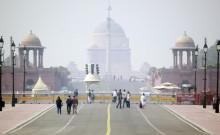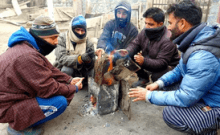
NASA has made nearly 20 years of image data related to the entire planet open to the public. They come in the form of interactive maps and images of the planet collected by the Terra and Aqua satellites launched in 1999 and 2002. With their easy-to-use tool, it is now possible to see how the whole world changed over the last two decades.
A release put out by the space agency says that all data collected by the Moderate Resolution Imaging Spectroradiometer (MODIS). The data goes back to the year 2000 and can be accessed through NASA's Global Imagery Browse Services (GIBS) for viewing using NASA's Worldview application.
Work on the application and this image service has been an ongoing one and the agency has been putting it together for 5 years now, notes the release. This service will prove to be a valuable tool for researchers as well as people who like to simply see how certain parts of the planet has changed over time.
Speaking of how this tool will benefit research, Santiago Gassó, an associate research scientist with NASA's Goddard Earth Sciences Technology And Research program at Morgan State University, said, "In the '80s and '90s, if you wanted to look at, say, clouds off the coast of California, you had to figure out the time of year when it was best to look at these clouds, then place a data request for a specific window of days when you thought the satellite overflew the area."
However, using the Worldview tool, it can be seen in a matter of minutes, which is almost instant, compared to what scientists had to go through. "You would get a physical tape with these images and have to put this into the processing system. Only then would you know if the image was usable. This process used to take from days to weeks," noted Gassó.
GIBS alone makes use of 600 satellite imaging tools and maps nearly every corner of the planet. Worldview takes this image data out of GIBS and makes it possible for users to interact and overlay all this data while using a MODIS global map.
Users of Worldview users can also make animations with the provided data easily, says NASA. GIBS and Worldview are a part of NASA's Earth Observing System Data and Information System (EOSDIS).
The main intention of this program, notes the release, is, "To be able to go from the very start, from the very first image to the present and move forward provides not only a sense of completeness but also the potential for new discoveries," said Ryan Boller, the EOSDIS data visualization lead and Worldview Project owner.















